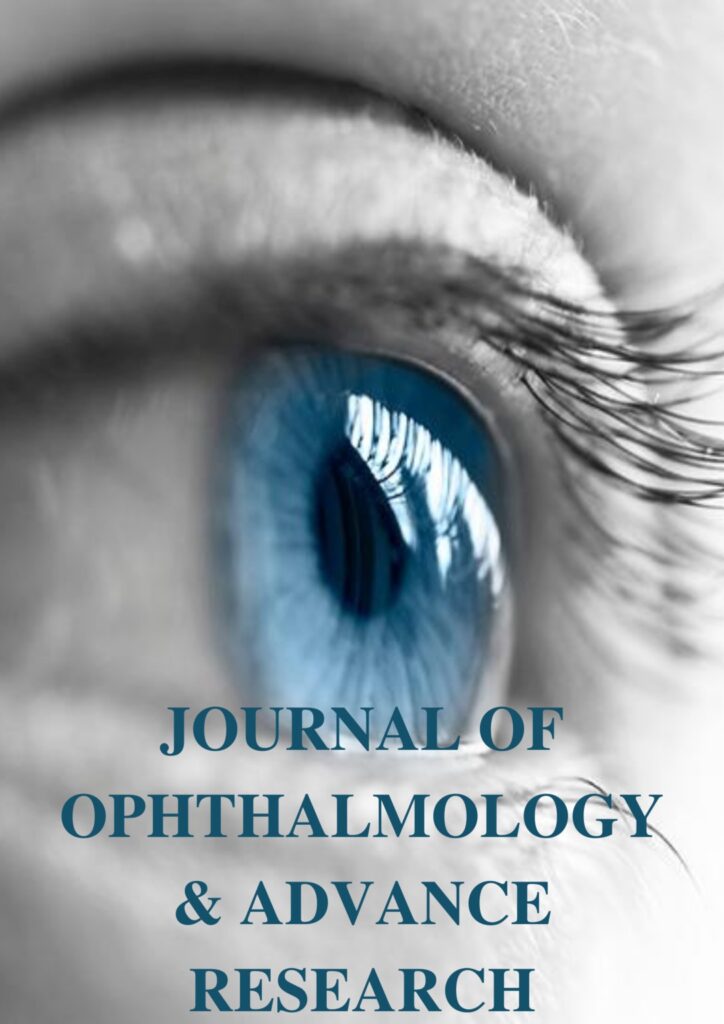Research Article | Vol. 6, Issue 1 | Journal of Ophthalmology and Advance Research | Open Access |
Knowledge, Postures and Practices of Patients Followed for Primary Open-Angle Glaucoma (POAG) in the Ophthalmology Department of Bouake’s University Hospital
Koffi KFH1, Diabaté Z1, Diomandé GF1, Bilé PEFK1*, Godé LE1, Goulé AM1, Babaeju OR1, Koffi KAP1, Ouattara Y1, Ahnoux AZ2, Diomandé IA1
1Ophthalmology Department, University Hospital Centre (CHU) Bouaké, 01 BP 1174 Bouaké 01, Côte d’Ivoire
2Ophthalmology Department, University Hospital Centre (CHU) Yalgado, 01 BP 5234 Ouaga01, Burkina Faso, Côte d’Ivoire
*Correspondence author: Philippe EFK Bile, Ophthalmology Department, University Hospital Centre (CHU) Bouaké, 01 BP 1174 Bouaké 01, Côte d’Ivoire; Email: [email protected]
Citation: Koffi KFH, et al. Knowledge, Postures and Practices of Patients Followed for Primary Open-Angle Glaucoma (POAG) in the Ophthalmology Department of Bouake’s University Hospital. J Ophthalmol Adv Res. 2025;6(1):1-7.
Copyright© 2025 by Koffi KFH, et al. All rights reserved. This is an open access article distributed under the terms of the Creative Commons Attribution License, which permits unrestricted use, distribution, and reproduction in any medium, provided the original author and source are credited.
| Received 13 January, 2024 | Accepted 01 February, 2025 | Published 08 February, 2025 |
Abstract
Introduction: Glaucoma is a chronic and silent disease whose clinical care is based on early detection and patient adherence to treatment. The aim of this study was to identify the level of knowledge and attitudes of patients with Primary Open-Angle Glaucoma (POAG) followed at the ophthalmology department of Bouake’s University Hospital.
Materials and methods: This was a retrospective and prospective study that was carried out on 55 glaucoma patients in Bouake’s University Hospital for 35 days. This study focused on the level of knowledge, attitudes and practices of patients suffering from POAG.
Results: Fifty five patients were able to respond to our questionnaires, with an average age of 42.64 years, with a female predominance of 51.40%, a sex ratio of 0.94. Patients with knowledge of glaucoma were the most numerous (91.76%). This knowledge was taught to patients by health workers (82.35%). Self-medication was practiced by 47.14% of glaucoma patients. The majority of patients claimed to have respected the dosage of medication in 94.3% but the majority had stopped treatment without any medical advice (58.60%).
Keywords: POAG; Knowledge; Attitudes; Practices; Bouake University Hospital
Introduction
The clinical care of patients with Primary Open-Angle Glaucoma (POAG) is crucial. Indeed, it facilitates adherence to treatment, disease management and patients’ quality of life. However, the high cost of care, the duration of treatment and therapeutic compliance have a psychological impact on patients. This situation has worsened with poverty, ignorance and difficult access to eye care for the population. Our study shows some restrictions that should be highlighted in order to guide future work. First of all, the sample’s size, limited to 55 patients, constitutes a significant constraint. This small size, combined with a convenience sampling method, does not guarantee the representativeness of all patients with POAG at the University Hospital of Bouaké or in the region. Thus, the results obtained must be interpreted as a general trend rather than an exhaustive description of the reality.
Methods
This was a retrospective and prospective descriptive descriptive study carried out at the ophthalmology department of Bouake’s University Hospital for 35 days from November 25 to December 29, 2024. This study included all patients followed for primary open-angle glaucoma who had benefited from an available clinical and para-clinical ophthalmological examination (automated visual field, optical coherence tomography of retinal nerve fibers) who agreed to answer our questionnaires. Patients with the condition who refused to participate in the study were not included. We studied the different parameters, namely: the socio-demographic characteristics of glaucoma patients, their level of knowledge about the disease, their attitudes and practices towards the disease. For data collection, we developed an anonymous survey form for this purpose. The data were counted using Epi info version 7.2 software. As for the numbers and the different averages, they were calculated using Word and Excel software. Our work showed a number of restrictions at the moment of data collection related to the reluctance of some glaucoma patients to participate in the survey.
Note: Our work aimed at knowing the level of knowledge of patients about their glaucoma disease and determining their attitudes and daily practices. For this purpose, we have developed questionnaires to be answered by patients already diagnosed at the clinical and para-clinical level. We therefore only used patients who were already known and under treatment or who had just benefited from it.
Results
Sociodemographic Characteristics of Participants
We noted a female predominance with a sex ratio of 0.94. The most frequent (48.60%), of the glaucoma patients were over the age of 40 years with an average of 42.64 years as well as extremes of 16 years 6 months and 94 years. Glaucoma patients residing in localities located between 10 km and 15 km from the hospital center were the most numerous (48.6%) followed by those who lived more than 15 km away (31.40%), with an average distance of 19.6 km.
Glaucoma Patients’ Knowledge of POAG
A significant majority of patients had knowledge of POAG (91.76%). Most patients had learned about POAG in a health center 82.35%. The most known risk factors of POAG by patients were heredity in 86.20% followed by age in 62.06%. The majority of patients knew the blinding nature of POAG in 94.30%.
Attitudes And Practices of Glaucoma Patients During Their Clinical Care
Self-medication is practiced by many glaucoma patients with 47.14%. Most patients (94.30%) testified that they respected the dosage of prescribed medications in 75.26% of cases. Patients asserted that they had stopped anti-glaucoma treatment in 58.60% of cases. The majority of patients had not carried out additional examinations (73.10%). Patients affirmed that they did not respect the follow-up appointments in most cases, 88.60% (Fig. 1, Table 1,2).

Figure 1: Distribution of patients by sex. The female gender was predominant with a sex ratio of 0.94.
Age | Number (N=55) | Percentage (%) |
| [20 ans -30 ans] | 6 | 10,91 |
| [30 ans -40 ans] | 14 | 25,45 |
| [40 ans -50 ans] | 21 | 48,18 |
| [50 ans – 60 ans] | 8 | 14,55 |
˃ 60 ans | 6 | 10,91 |
Total | 55 | 100 |
Table 1: Distribution of patients by age.
Distance | Number (N=55) | Percentage (%) |
| [10 km -25 km] | 7 | 12,73 |
| [25 km -35 km] | 11 | 20 |
| [35 km – 45 km] | 20 | 36,36 |
˃ 45 km | 17 | 30,91 |
Total | 55 | 100 |
Table 2: Distribution of patients according to the distance between the medical center and the dwelling place.
Glaucoma patients residing in areas located between 55 km and 45 km from the medical center were the most numerous (48.6%) with an average age of 46.08 km (Fig. 2, Table 3).
Knowledge About POAG

Figure 2: Distribution of patients according to their knowledge of POAG. The majority of patients had knowledge about POAG (89.10%).
Means of Access to Information | Number | Prrcentage (%) |
Social networks | 6 | 10,91 |
Conversation between friends | 10 | 18,18 |
In a heath center | 39 | 70,91 |
Total | 55 | 100 |
Table 3: Distribution of patients according to means of access to true information about knowledge.
Most patients received information on POAG from healthcare staff in health centers in 70.91% (Fig. 3-7).
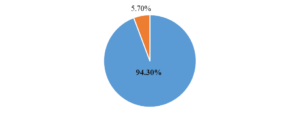
Figure 3: Distribution of patients according to knowledge of the blinding nature of POAG. The blinding nature of POAG was known by the majority of patients with 94.30%.
Attitudes and Practices
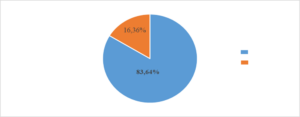
Figure 4: Distribution of patients according to the practice of self-medication. Self-medication was practiced by most glaucoma patients.
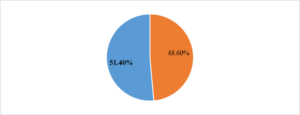
Figure 5: Distribution of patients according to treatment interruption. The interruption of anti-glaucoma treatment was confirmed by more than half of the patients (51.40%).
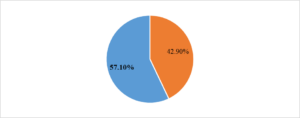
Figure 6: Distribution of patients according to the performance of additional examinations. The majority of patients (57.10%) were unable to perform the additional examinations.
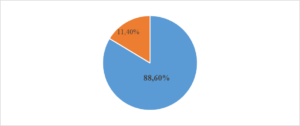
Figure 7: Distribution of patients according to compliance with follow-up appointments. The majority of patients claim not to comply with follow-up appointments (88.60%).
Discussion
Socio-demographic Aspects
Most of our patients were female (51.40%) with a sex ratio of 0.94. Our results are in accordance with those of Tchabi, in Benin and Villain, et al., in France [4,5]. There was a female predominance at respective frequencies of 56.7% and 54.3%. However, other studies have found a male predominance in particular.
Ahnoux in Ivory Coast and Wane in Senegal found 59.4% and 58.1% [6,7]. This predominance of the female gender would be in conformity with the new tendency that would advocate gender equality in professional activities and the strong desire for emancipation of the female gender. The average age of patients with POAG was 42.64 years as well as extremes of 16 years 6 months and 94 years.
The average age found in our work was in accordance with those of Fanny Ivory Coast and Merle in Martinique who found respective average ages of 44.40 ± 12, 45.35 [8]. These results reflect the literature because according to the WHO glaucoma is a pathology that occurs mainly after 40 years [9]. Glaucoma patients dwelling in areas located between 55 km and 45 km from the hospital center were the most numerous (48.6%) with an average distance of 46.08 km. The remoteness of health centers from populations as well as the disproportionate distribution of health centers in Africa has been observed by Bouabid in Morocco as well as in the work of the World Health Organization [10].
References Knowledge of Glaucoma Patients on POAG
In this study, most patients had knowledge about POAG (91.76%). Most glaucoma patients had received information about this pathology from health workers in 82.35%. Also, most patients had a better understanding of certain risk factors about POAG, namely the hereditary nature of the condition and the impact of age at respective frequencies of 86.20% and 62.06%. To these different parameters known by many patients was associated with the blinding nature of POAG which was also known by most patients in 94.30%. All this knowledge of patients with POAG noted in our work was also found in the work of Rosdahl, in India and Skalicky in Australia [11,12]. The latter had noted that the majority had stated (94.3%) knowing the consequences of POAG and emphasizing that they knew that the treatment was for life. This knowledge could be explained by good communication between health workers and patients, allowing a better explanation of the pathology by health personnel.
Attitudes and Practices of Glaucoma Patients During Their Care
Self-medication was practiced by many glaucoma patients with 47.14%. The frequent observation of this practice would be related to the high cost of certain anti-glaucoma drugs sometimes leading patients to choose less expensive molecules. This fact could be associated with the distance from supply areas and health centers as in most sub-Saharan African countries.
Non-compliance with this criterion of therapeutic compliance was noted by Bour, in most subjects with chronic pathologies in France [1]. Most patients (94.30%) confirmed that they respected the dosage of the prescribed medications in 75.26% of cases. Compliance with the dosage of anti-glaucoma drugs stated by patients would be most often observed at the beginning of treatment in definitive cure. Because some authors such as Jalel, in Tunisia and Bour, had found in their work the non-compliance with the dosage of medications in the majority of their glaucoma patients in respective proportions of 61.4% and 62.13% [1,13]. The majority of patients stated that they had interrupted the anti-glaucoma treatment in 58.60% of cases. Similarly, many patients had not been able to carry out additional examinations (73.10%).
Both the stopping of treatment, the non-performance of additional examinations and self-medication the arguments favoring these facts in patients with POAG would sometimes be similar. Thus, the low socio-economic level of patients, the difficulties of access to the health center, the lack of a satisfactory clinical improvement are all arguments generating the above-mentioned facts. The patients who claimed not to have respected the follow-up appointments were the most numerous with 88.60%. The strict respect of the follow-up appointments observed in the majority of our glaucoma patients followed corroborates those of Santos in Togo, Viola, in Cameroon 64.5%; 65.7% [14,15]. This criterion is sometimes better respected when there is a very good collaboration between the treating physician and his patient.
Conclusion
Primary Open-Angle Glaucoma (POAG) is a major cause of preventable blindness in the world. This study, focused on assessing the knowledge, attitudes and practices of patients with primary open-angle glaucoma, highlights several crucial issues for improving the medical care of this pathology. It is essential to strengthen awareness and education strategies for patients with POAG. This study highlights the need, combining community education, accessibility, reinforced medical monitoring and to popularize glaucoma’s surgery in order to lessen the number of anti-glaucoma medications.
Conflict of Interest
The authors declare no potential conflicts of interest with respect to the research, authorship and/or publication of this article.
Funding Details
No funding was received for this review. No other financial disclosures of all authors.
References
- Bron A. Glaucoma, useful knowledge! Medi-Text Editions 2004.
- Napo A, Kéïta F, Guirou N, Boro A, Aboubacar H, Konandji F, et al. Assessment of quality of life in patients with primary open-angle glaucoma in an urban environment. Mali Médical. 2019;3:34-8.
- Negrel AD. Glaucoma: Let’s focus on the pole our patients will benefit from it. Community Health Review. 2007;3:11-3.
- Tchabi S, Abouki C, Sounouvou I, Yèhouessi L, Doutetien C, Bassabi SK. Compliance with medical treatment in primary open-angle glaucoma. J FR Ophthalmol. 2011;34:624-28.
- Villain M, Nordmann JP, Renard JP, Bron A, Delcourt C, Pinchinat S, et al. French glaucoma and hypertonia survey 1 day. J Fr Ophtalmol. 2006;29:520-5.
- Ahnoux-Zabsonre A, Keita C, Safede C, Tanoe A. Prevalence of primary chronic open-angle glaucoma in Côte D’Ivoire. J Fr Ophtalmol. 1998;9:643-7.
- Wane AM, Ndiaye MR, Wade A, Ndiaye PA, Ba EA, de Meideros M, et al. Compliance to medical treatment in primary open-angle glaucoma. J Fr Ophtalmol. 2003;26:1039-44.
- Merle H, Renard A, Donnio A, Richet R, Ayeboua L, Enfelder E, et al. Glaucoma screening in Martinique: Results in a population of 813 hospital employees. J FR Ophthalmol. 2004;267:136-42.
- WHO: World Health Organization: State of health in the WHO African Region: analysis of the health situation, services and health systems in the context of the Sustainable Development Goals. Regional Office for Africa Meeting 2018. 20218.
- Bouabid: Bouabid Abderrahim. Territorial inequalities and access to health care in Al Haouz province. Public Health Magazine. 2023;12:45-60.
- Rosdahl JA, Muir KW. Finding the best glaucoma questionnaire: a qualitative and quantitative assessment of glaucoma knowledge assessments. Clin Ophthalmol. 2015,9:1845-52.
- Skalicky SE, Mellow G, Maison, Fenwick E . Glaucoma Australia educational impact study: a short-term randomized clinical trial evaluating the association between glaucoma education and patient knowledge, anxiety and treatment satisfaction. Clin Exp Ophtalmo. 2017;9:202-8.
- Jalel T, Thouraya Ajmi N, Hafedh BO, Ali M, Fafani BH. Therapeutic compliance in primary open-angle glaucoma. Tunisie Médicale 2011; 89: 142-7.
- Santos MA, Ayena DK, Kuaovi KR, Vonor K, Djagnikpo A, Balo KP. Adherence to medical treatment in primary open-angle glaucoma in Lomé. J Fr Ophtalmol 2016;39:459-66.
- Viola AD, Ebana SRM, Ellong A, Epee E, Koloko JDB, Ebana CM. Compliance to medical treatment in primary open-angle glaucoma of Douala’s General Hospital. SOAO Magazine. 2015;02:45-9.
Author Info
Koffi KFH1, Diabaté Z1, Diomandé GF1, Bilé PEFK1*, Godé LE1, Goulé AM1, Babaeju OR1, Koffi KAP1, Ouattara Y1, Ahnoux AZ2, Diomandé IA1
1Ophthalmology Department, University Hospital Centre (CHU) Bouaké, 01 BP 1174 Bouaké 01, Côte d’Ivoire
2Ophthalmology Department, University Hospital Centre (CHU) Yalgado, 01 BP 5234 Ouaga01, Burkina Faso, Côte d’Ivoire
*Correspondence author: Philippe EFK Bile, Ophthalmology Department, University Hospital Centre (CHU) Bouaké, 01 BP 1174 Bouaké 01, Côte d’Ivoire; Email: [email protected]
Copyright
Koffi KFH1, Diabaté Z1, Diomandé GF1, Bilé PEFK1*, Godé LE1, Goulé AM1, Babaeju OR1, Koffi KAP1, Ouattara Y1, Ahnoux AZ2, Diomandé IA1
1Ophthalmology Department, University Hospital Centre (CHU) Bouaké, 01 BP 1174 Bouaké 01, Côte d’Ivoire
2Ophthalmology Department, University Hospital Centre (CHU) Yalgado, 01 BP 5234 Ouaga01, Burkina Faso, Côte d’Ivoire
*Correspondence author: Philippe EFK Bile, Ophthalmology Department, University Hospital Centre (CHU) Bouaké, 01 BP 1174 Bouaké 01, Côte d’Ivoire; Email: [email protected]
Copyright© 2025 by Koffi KFH, et al. All rights reserved. This is an open access article distributed under the terms of the Creative Commons Attribution License, which permits unrestricted use, distribution, and reproduction in any medium, provided the original author and source are credited.
Citation
Citation: Koffi KFH, et al. Knowledge, Postures and Practices of Patients Followed for Primary Open-Angle Glaucoma (POAG) in the Ophthalmology Department of Bouake’s University Hospital. J Ophthalmol Adv Res. 2025;6(1):1-7.

